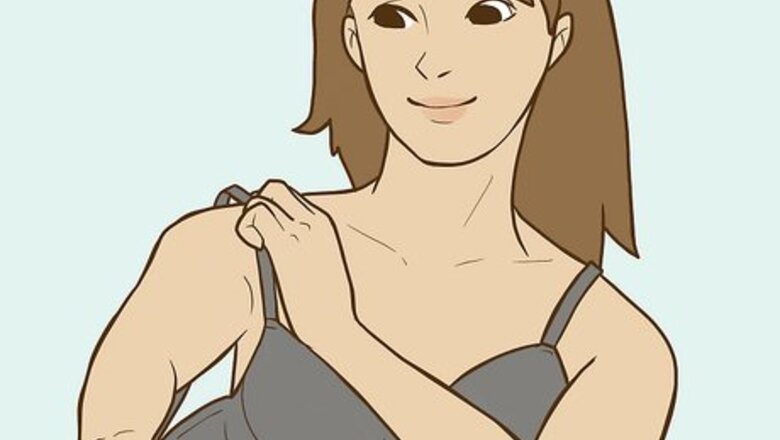
views
Positioning Your Bra
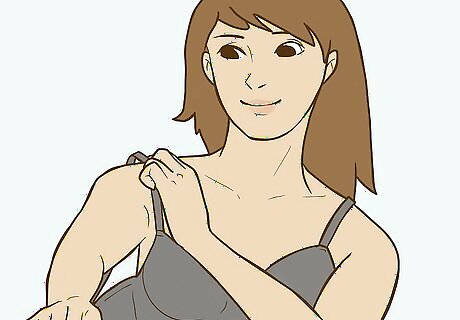
Put your arms through the straps. Hold the bra in front of you so that the inside of the bra is facing you. Then, put your right arm through the right armhole and left arm through the left armhole. If you have a strapless bra, place the bra against your breasts instead. A traditional bra will have two straps that attach the bra cups to the back of the bra and run up and over your shoulder to the back.
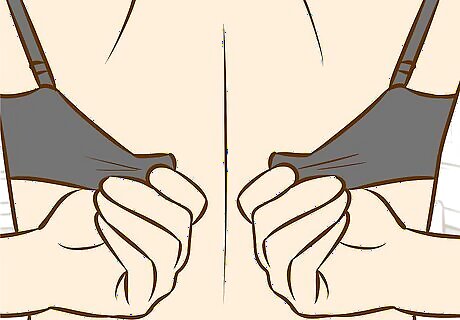
Clasp the bra in the back. Most bras have clasps in the back that connect the right side of the bra to the left. These clasps will typically have either two or three hooks on one side that will connect with two or three loops on the other side. Your goal is to get all of the hooks into the loops. Try to connect them with the clasps behind your back. Skip this step if your bra has a clasp in the front or side. Make sure that clasps are aligned vertically. Be careful not to off-set the hooks and eyes.
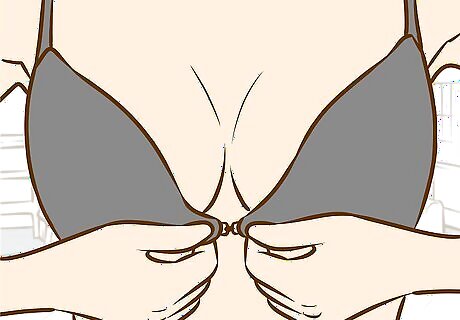
Clasp your bra in the front or side. Some bras have a clasp around the front or side instead of the back. The clasp in the front typically just has one setting, so it's easy to clasp it. The clasp on the side can also have multiple settings which you can adjust just as you would adjust the clasps on the back. Some bras have an adjustable strap in the front in addition to the clasp. After you secure the clasp, you can pull on the strap to tighten the bra.
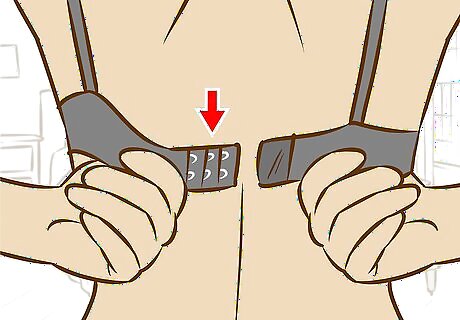
Choose your tightness setting. Many bras have two or three settings of tightness, so you can adjust the bra a bit to make it tighter or looser around your body. If your bra is new, it should fit closely on the loosest hook. This will allow you to tighten the bra over time as the elastic wears and stretches. If a newer bra can be fastened on the middle or tightest hooks, you may need a smaller back size.
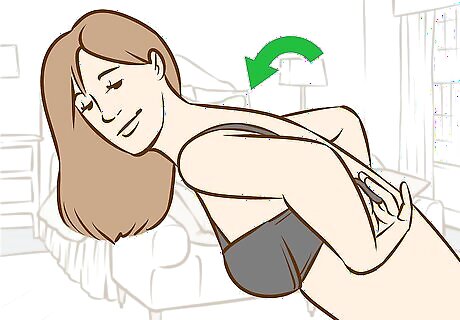
Bend down to help move your breasts into the cups. If you're not already standing, stand up and bend down so that you lower your chest towards the floor. This will help you move your breasts in the right direction. You can remain standing or sitting up straight if this isn’t comfortable for you.
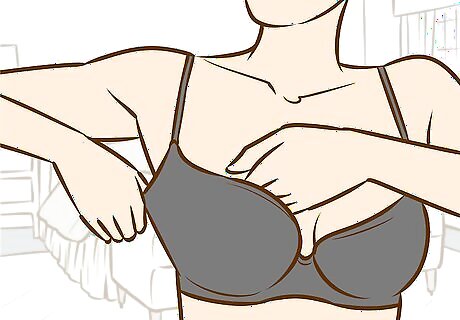
Fill the cups with all of your breast tissue. First, feel the sides of your breasts for any additional tissue that is hanging out of the cups below your armpit. Feel for this tissue with the opposite hand from each breast and then move it in to fill the side of the cup. Then, use the same hand to lift up the breast so that you've moved the sides of the breast in and then up. If you're in front of a mirror, you may be able to see this extra tissue.
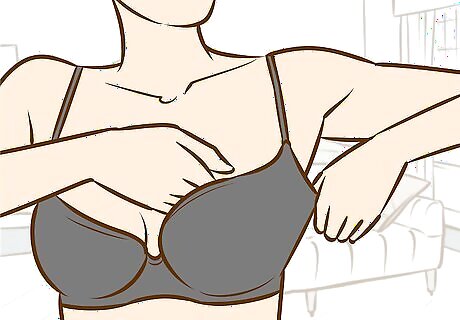
Repeat the same process with your other hand and other breast. The sides of your breasts should have been gently eased into the sides of each cup and then lifted outwards. You can stand straight up again when you've adjusted your breasts.
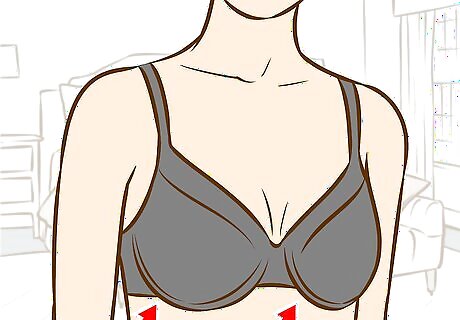
Make sure the underwire is underneath your breasts. Ideally, the underwire of your bra should be positioned right along the bottom of your breasts without leaving any extra space for them to hang down. Your breasts should be perky and moved upwards. They should not be hanging down below the underwire. Some bras do not have underwire. If that’s the case, then just make sure the bottom of the bra runs smoothly across your body.
Adjusting Your Bra
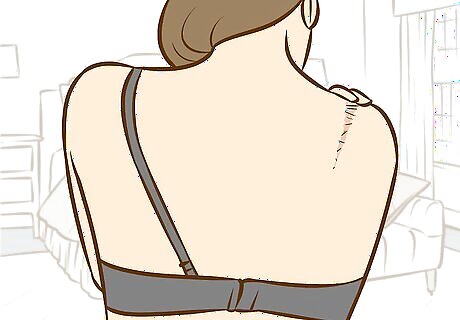
Make the straps looser if they’re too tight. Simply pull down on the clasp so it moves closer to the back of the bra and then pull up the extra strap that will hang loose to straighten out the straps. Pull down both clasps to an equal length. If they're too tight, then you'll feel constricted near the straps and may even feel them digging into the skin of your shoulders. The clasps are the plastic things on the back of the bra—each strap will have one.
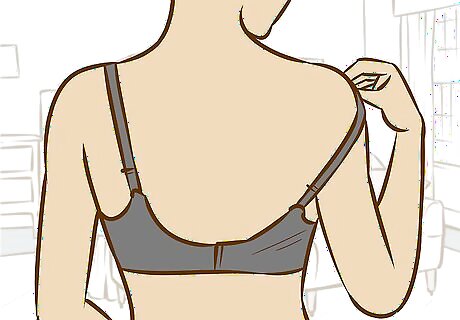
Make the straps tighter if they’re too loose. Pull up the clasp from the bottom, moving it up, toward the front of your bra. You'll need to pull down on the straps while moving up the clasps. If the straps are too loose, they can fall down off your shoulders all the way to your elbows.
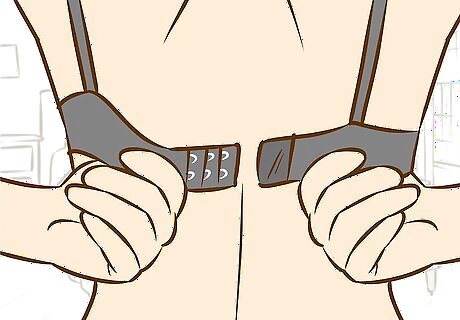
Make the hooks tighter or looser depending on how the band feels. Sometimes the bra doesn’t feel comfortable because the hooks are too loose or tight. To make it tighter, hook the bra on the eyes which are further in. To make it looser, adjust the hooks to the farthest out eyes. If you can comfortably wear a new bra on the tightest hooks, consider going down a band size. You should wear new bras on the loosest hooks except when pregnant.
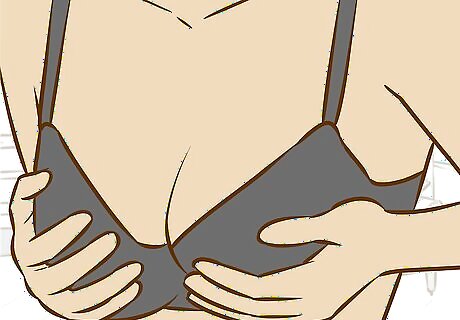
Feel the bra to make sure it's positioned correctly. Once you've put on the bra and adjusted the straps, gently pull at the straps and the sides and back of the bra to make sure that it fits comfortably. After this, you can begin to make sure that your breasts fill the cups, which is the trickiest part of putting on a bra. Check the straps and band of the bra to make sure that nothing is twisted. The cup size may be too large if your breasts don’t come close to filling the cup. The cup size may be too small if your breasts overfill the cup.
Picking the Right Bra
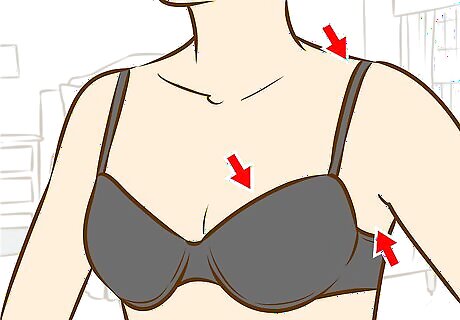
Look out for obvious signs that your bra is the wrong size. The majority of women are wearing the wrong sized bra. If your bra isn't the right size, then you will have trouble putting it on because it won't fit your dimensions correctly. Here are some easy signs that say that you're wearing the wrong bra: Your breasts spill out of the top of the bra. The straps or band of the bra cut into you. The bra feels incredibly tight—like you can't breathe in it. The bra is so loose that the straps fall down no matter how much you adjust them. You can can comfortably fit two fingers between your side and the band of the bra.
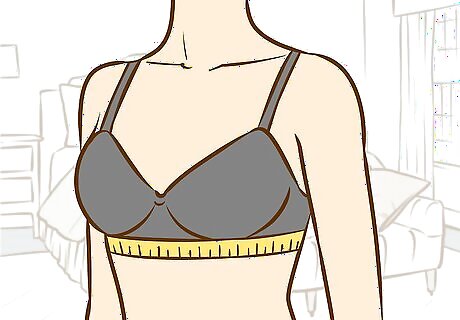
Measure your band size. To get an idea of your band size, measure your under bust in inches, making sure the tape is snug, but not tight. If it is below 30" (76 cm), round up to the nearest even number. If it is above 36" (91 cm), round down. This is your band size. It's super important to get the right band size. If your bra is constantly riding up in the back or the straps are falling off the shoulder, size down on the band, while at the same time staying at the same cup size or going up one cup size. If your under bust measures over 36" (91 cm), take a bust measurement while lying on your back. Average the two bust measurements, then calculate the cup size.
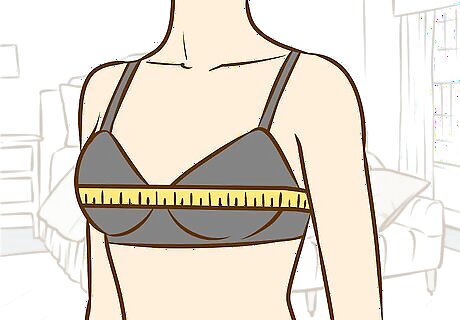
Measure your cup size. To work out the cup size, lean forwards at 90 degrees and measure your bust loosely. Take the difference between the bust and under bust measurements, and convert into cup letters. For example, an A cup has a 1" (2.5 cm) difference, while a B cup has a 2” (5 cm) difference.
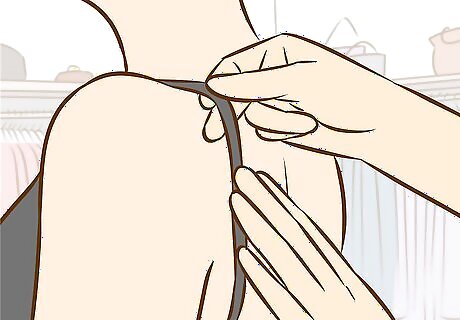
Go get a professional fitting. This is the best thing to do if you don’t feel confident measuring your own bra size. Independent boutiques are generally the best places to get fitted because the fitters are specially trained. Department stores are generally not the best places to get fitted, as the employees often aren't trained well and sometimes use outdated measuring techniques. Go to several places to get a bra fitting done before purchasing a bra.
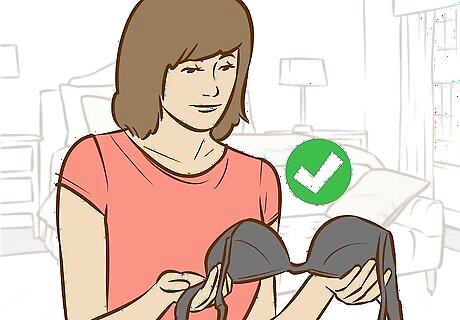
Trust the measurements. You may have thought that you were a 36C all of your life, only to be told that you're really a 34D. Don't reject the measurements if the bra fits comfortably. Instead, try wearing a bra in the correct size and see how much better you feel. If you really aren't sure about the results of the fitting, try on as many bras as you can, or get another opinion from a professional.
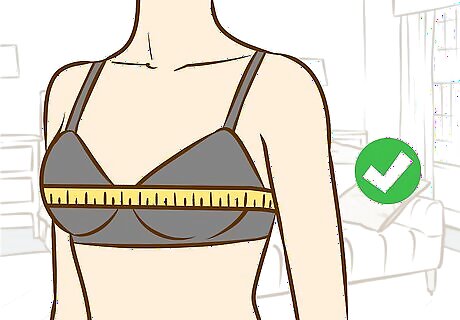
Measure your size once a year. There are a variety of reasons the size of your breasts can change. Your size could change because your body is still growing, because you've experienced significant weight loss or gain, or if you're pregnant. Measuring regularly is a good habit to keep up if you want to wear the right bra and be able to put it on correctly.




















Comments
0 comment